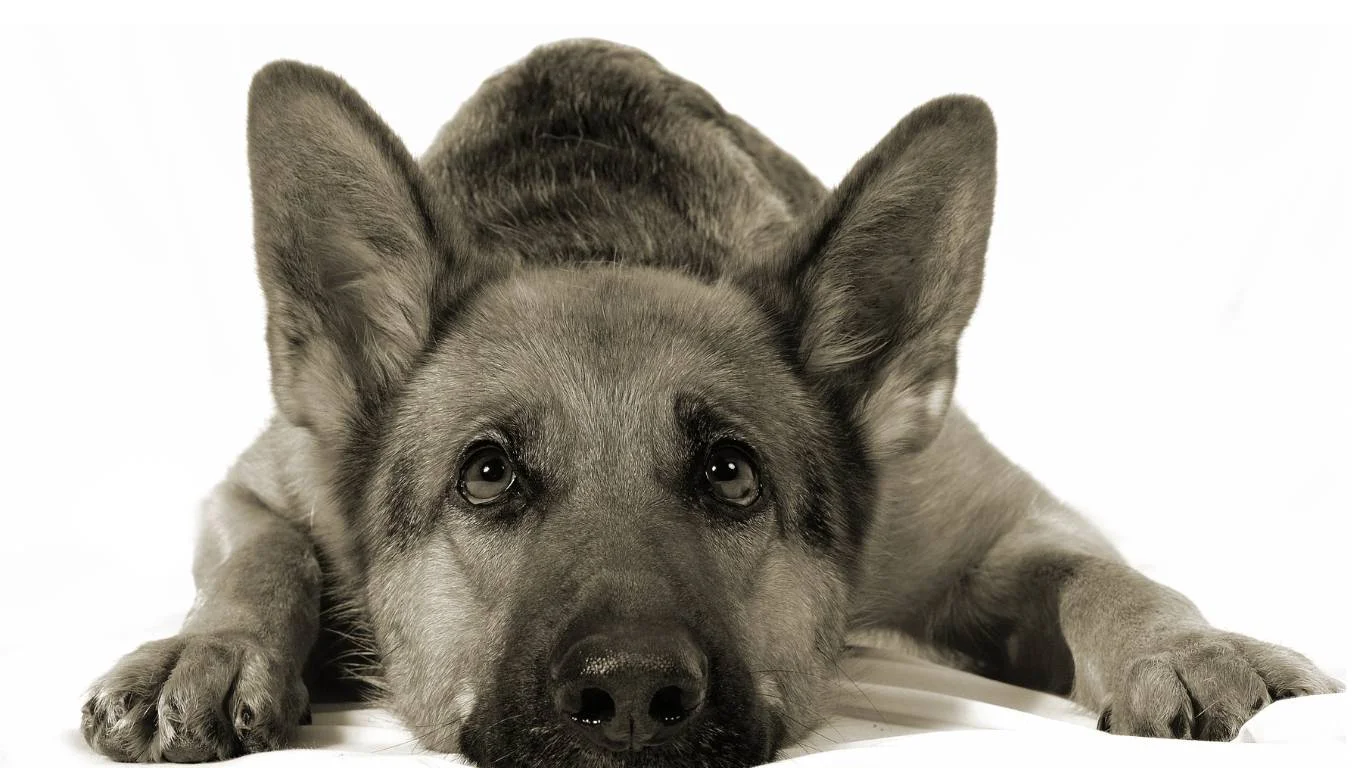How to Tell If Your Dog Has a Neurological Disorder: Warning Signs & Solutions
As a pet nutritionist and pet care expert working in a veterinary clinic, I’ve seen firsthand how confusing it can be when a dog starts showing signs that something is off. And when it comes to neurological disorders, the signs are often subtle, making it even harder for pet owners to know when it’s time to seek help. So, how do you tell if your dog has a neurological disorder? In this article, we’re going to explore the signs, symptoms, and what you can do to help your pup if you suspect they’re dealing with a neurological issue. Whether you’re new to dog care or a seasoned pet parent, this info will give you a better understanding of what to watch out for. Let’s dive right in!
What is a Neurological Disorder in Dogs?

Before we get into the nitty-gritty of symptoms and signs, it’s important to first understand what a neurological disorder is. Simply put, it’s any condition that affects your dog’s brain, spinal cord, or nerves. These disorders can be congenital (present at birth) or acquired (developing over time due to injury, disease, or other factors). The most common neurological disorders in dogs include seizures, intervertebral disc disease (IVDD), brain tumors, and even vestibular disease, among others. Neurological disorders often lead to serious changes in behavior, coordination, and physical abilities, which is why identifying the symptoms early on can make a huge difference in getting your dog the care they need. So, let’s dive into the signs you should be aware of.
Common Signs Your Dog May Have a Neurological Disorder

If you’ve noticed any strange behavior or physical changes in your dog lately, it’s normal to feel worried. The good news is that by being observant, you can pick up on some common signs that indicate a potential neurological problem. Here are a few red flags to keep an eye out for:
- Seizures: These are one of the most obvious signs that something is wrong with your dog’s brain or nervous system. Seizures can vary from mild twitching to full-body convulsions. If your dog has a seizure, it’s important to seek veterinary care immediately.
- Unexplained Disorientation: If your dog suddenly starts walking in circles, staring at walls, or seems “lost” in familiar places, it could be a sign of a neurological issue affecting their brain.
- Changes in Coordination: Neurological disorders can affect your dog’s ability to move. If you notice your dog stumbling, dragging their back legs, or having difficulty standing up, it’s time to consult your vet.
- Abnormal Eye Movements: If your dog’s eyes are darting rapidly from side to side or if they seem to be having trouble focusing, this could indicate a problem with their nervous system.
- Changes in Behavior: Sudden personality changes, such as increased aggression or irritability, can sometimes be linked to neurological disorders. If your dog starts acting uncharacteristically, it’s worth investigating further.
- Incontinence: Neurological conditions can also affect your dog’s bladder and bowel control. If your dog starts having accidents in the house or seems unable to control their urination or defecation, it may indicate a neurological problem.
Behavioral Changes: A Common Sign of Neurological Issues

One of the more subtle signs of neurological disorders in dogs is a change in behavior. When your dog starts acting differently, it might not always be easy to pinpoint the cause. For instance, dogs are usually creatures of habit, so if you notice your pup becoming unusually aggressive or lethargic, it’s worth considering a neurological cause. In my experience, owners often chalk up these shifts to aging or bad moods, but in reality, they could be indicators of something deeper.
Neurological conditions can impact your dog’s mood, causing them to act out of character. A dog that’s usually social and playful might start avoiding human interaction, or a dog that’s typically calm might suddenly become restless and anxious. If you’re noticing these behavioral changes, don’t ignore them. These are often some of the first symptoms that dog owners spot before a more physical issue arises.
Physical Symptoms of Neurological Disorders
When neurological disorders progress, they often show up in physical symptoms that can be harder to miss. These can range from mild issues like slight limping to more severe ones, such as a complete loss of mobility. If your dog starts showing signs of discomfort or struggling with basic movements, it could be time to consider a neurological evaluation. Here are some physical symptoms that may signal a neurological issue:
- Muscle Weakness: If your dog is dragging their legs or having trouble jumping onto furniture or going for walks, it could be a sign of muscle weakness due to a neurological condition.
- Shaking or Tremors: Involuntary shaking or tremors can sometimes be linked to neurological disorders, especially when they occur without an obvious cause like cold weather.
- Changes in Gait: A dog with a neurological disorder might start walking with a wobble, drag their feet, or show signs of imbalance.
- Loss of Reflexes: Your dog’s reflexes may also be impacted. If you notice that your dog doesn’t respond to stimuli like they usually do, it could be a sign of a neurological issue.
Why Early Detection is Crucial
As with most medical issues, the earlier you detect a problem, the better the chances of effective treatment. Neurological disorders in dogs can progress quickly, and catching them early can make a huge difference in your dog’s quality of life. In some cases, early intervention can even help manage symptoms or slow down the progression of the disease. By paying attention to your dog’s behavior, movement, and overall health, you’ll be better equipped to detect any potential neurological problems as soon as they arise.
It’s always a good idea to keep a close eye on your dog’s health, especially as they age. Regular check-ups with your vet can help catch issues before they become serious, and your vet will be able to provide more specific guidance if you suspect a neurological disorder.
Diagnosing Neurological Disorders in Dogs

So, now you’ve noticed some signs that have you concerned. Maybe your dog is acting a bit different, or you’ve observed some physical changes. The next logical question is: how do you get an accurate diagnosis? Well, diagnosing neurological disorders in dogs is no easy feat, but with the right tools and expertise, veterinarians can usually pinpoint the issue. Here’s what you can expect during the diagnostic process.
As a pet nutritionist working in a veterinary clinic, I’ve been part of many cases where a thorough diagnostic approach made all the difference. The process usually starts with a detailed history and a physical exam. Your vet will want to know about any behavioral changes you’ve noticed, as well as your dog’s overall health and lifestyle. The more information you can provide, the better.
Veterinary Examination: The First Step
The first thing your vet will do is perform a thorough physical exam. They’ll check your dog’s reflexes, posture, balance, and eye movements to assess neurological function. Often, they may also conduct a series of tests to evaluate their coordination and muscle strength. These exams give the vet a basic understanding of whether there’s something off with your dog’s nervous system. This part of the process can help narrow down potential causes, but it’s often just the first step.
In my experience, one of the most common tests done at this stage is the “wheelbarrow test” where the vet gently lifts your dog’s back legs while they’re standing. If your dog has trouble balancing or can’t hold themselves up properly, it may be a sign of neurological impairment.
Advanced Diagnostic Tools: Imaging and More

If the physical exam suggests that there might be a neurological issue, your vet will likely recommend some advanced diagnostic tools, such as blood tests, imaging, or even a spinal tap. These tools are essential for getting a clear picture of what’s going on inside your dog’s body.
Blood Tests: Blood work is often one of the first things vets will do. It can help rule out other conditions like infections or metabolic disorders that might mimic neurological symptoms. Sometimes, blood tests will also indicate whether inflammation is present in the body, which can point to certain neurological conditions.
MRI or CT Scans: These imaging tools allow the vet to see the brain and spinal cord in detail. They can identify abnormalities like tumors, herniated discs, or other issues that might be affecting your dog’s nervous system. An MRI is often the go-to method for diagnosing neurological disorders, but it’s not always available in every clinic. In these cases, a CT scan can provide useful information as well.
Spinal Tap (Cerebrospinal Fluid Analysis): In some cases, your vet may need to collect a sample of your dog’s cerebrospinal fluid to analyze for signs of infection, inflammation, or other abnormalities. This is a more invasive procedure, but it can be incredibly helpful for diagnosing diseases like meningitis or encephalitis, which affect the brain and spinal cord.
Common Neurological Disorders in Dogs

Now that you know what to expect when diagnosing a neurological disorder, let’s take a closer look at some of the most common conditions that can affect your dog’s nervous system. Some of these are relatively easy to treat if caught early, while others may require long-term management or even surgery. Here are a few of the most common neurological disorders I’ve encountered in my time working in veterinary clinics:
1. Seizures
Seizures are one of the most alarming symptoms a dog can experience, but they’re actually one of the most common neurological disorders seen in veterinary practice. Seizures can be caused by a wide variety of factors, including genetic predisposition, brain tumors, or liver disease. If your dog is experiencing seizures, it’s essential to seek veterinary care as soon as possible. There are medications available that can help control seizures and prevent further episodes.
2. Intervertebral Disc Disease (IVDD)
Intervertebral Disc Disease (IVDD) is another common condition in dogs, particularly those with long backs like Dachshunds or Corgis. IVDD occurs when the discs in the spine degenerate or herniate, pressing on the spinal cord and causing pain, weakness, and even paralysis. Symptoms can vary from mild to severe, but early treatment, which might include medications or surgery, can make a huge difference in your dog’s recovery.
3. Vestibular Disease
Vestibular disease affects the balance system and often causes dogs to have difficulty walking, spinning in circles, or falling over. The condition may appear suddenly and can be alarming to dog owners. However, it’s often a result of age-related changes in the brain and can sometimes resolve on its own with supportive care. In more severe cases, medication and physical therapy may be required to help your dog recover.
4. Brain Tumors
Brain tumors are less common but can be a serious cause of neurological issues in dogs. Symptoms of a brain tumor can include seizures, behavioral changes, and balance problems. If your dog’s symptoms suggest a brain tumor, your vet may recommend advanced imaging to confirm the diagnosis. Treatment options often include surgery, radiation therapy, or chemotherapy, depending on the tumor’s location and size.
As you can see, there are a variety of conditions that could be responsible for your dog’s symptoms. The key to helping your pup is early detection and treatment. If you suspect your dog has a neurological disorder, don’t hesitate to reach out to your vet. The sooner you get a diagnosis, the better the chances of your dog making a full recovery.
Treatment Options for Neurological Disorders in Dogs

Once your vet has identified the neurological disorder affecting your dog, the next step is determining the best course of treatment. Treatment can vary greatly depending on the condition and its severity. In some cases, a simple medication regimen is enough to help your dog recover. In other cases, more intensive treatment options like surgery or long-term management plans may be necessary. Let’s take a look at some of the common treatments for neurological disorders in dogs and how they can help restore your dog’s quality of life.
Medication
For many neurological disorders, medication is the first line of treatment. If your dog is suffering from seizures, for example, there are several anti-seizure medications available that can help control the frequency and intensity of the episodes. Medications like phenobarbital and potassium bromide are commonly prescribed, and while they can’t cure the underlying cause, they can help your dog live a more comfortable life.
In cases of vestibular disease, which often causes dizziness and balance issues, your vet may prescribe anti-nausea or anti-inflammatory medications to help ease symptoms. Inflammation in the brain or spinal cord, often caused by conditions like encephalitis or meningitis, can also be treated with corticosteroids to reduce swelling and discomfort.
Another treatment option is pain management. If your dog has a herniated disc or other spinal issues, pain medications like tramadol or gabapentin may be used to manage the discomfort. These medications don’t fix the underlying problem, but they can provide relief while your dog heals or undergoes further treatment.
Surgery
For certain neurological disorders, surgery may be required. For example, if your dog is diagnosed with a brain tumor or spinal cord injury, surgery may be the best option for removing the tumor or repairing damaged tissue. Surgery can be risky, especially in older dogs or those with other underlying health issues, but it’s often the most effective way to address more serious neurological conditions.
Intervertebral Disc Disease (IVDD) is another condition that may require surgical intervention. If your dog’s discs are severely herniated and causing paralysis, a surgeon can perform a procedure to remove or repair the damaged discs and relieve pressure on the spinal cord. The sooner this surgery is done, the better the chances of a full recovery, so don’t wait too long if you suspect your dog has IVDD.
Physical Therapy and Rehabilitation

Physical therapy and rehabilitation are often essential parts of the recovery process for dogs with neurological disorders. Just like humans, dogs need time to regain strength and coordination after experiencing a neurological event like surgery, a stroke, or a severe injury. Physical therapy can help your dog rebuild muscle strength, improve their balance, and regain mobility.
In fact, I’ve personally seen many dogs make incredible recoveries with the help of rehabilitation. Dogs with IVDD or those recovering from neurological surgery often benefit from a combination of exercises, hydrotherapy, and massage therapy. Your vet or a specialized canine rehabilitation therapist will be able to guide you through the process and help create a personalized treatment plan.
Ongoing Management and Care
While some dogs recover completely from neurological disorders, others may require ongoing care to manage their condition. This is especially true for chronic issues like epilepsy or degenerative diseases that affect the brain and spinal cord. In these cases, your vet will work with you to develop a long-term management plan that might include a combination of medications, physical therapy, and lifestyle modifications.
Diet can also play an important role in managing neurological conditions. For example, some dogs with seizures benefit from a special diet, like the ketogenic diet, which has been shown to reduce the frequency of seizures in some cases. As a pet nutritionist, I’ve seen how proper nutrition can make a big difference in a dog’s ability to cope with neurological disorders. Always work with your vet to determine the best diet for your dog’s specific needs.
Preventing Neurological Disorders in Dogs
As much as we wish we could prevent all neurological issues, some conditions are genetic or age-related, making them difficult to avoid. However, there are a few proactive steps you can take to give your dog the best chance of staying healthy and avoiding neurological problems:
- Regular Vet Checkups: Routine checkups with your vet are essential to catch potential health problems early. Regular exams can help your vet monitor your dog’s neurological health and address any issues before they become serious.
- Maintain a Healthy Weight: Obesity can put extra strain on your dog’s joints and spine, increasing the risk of conditions like IVDD. Keeping your dog at a healthy weight can help prevent these issues and promote overall health.
- Exercise: Regular exercise is key to keeping your dog’s muscles, joints, and nervous system in good shape. Make sure your dog gets enough physical activity based on their age and breed.
- Avoid Trauma: Accidents like falls or collisions can cause spinal injuries or head trauma, which may lead to neurological disorders. Keep your dog safe by avoiding risky situations and using proper restraint in the car.
References
If you’re looking for more detailed information on neurological disorders in dogs, the following resources may be helpful:
- PawPatron – Dog Health Resources
- American Veterinary Medical Association (AVMA)
- DVM 360 – Veterinary Resources
It’s always a good idea to stay informed and consult your veterinarian regularly to ensure your dog’s health and well-being. If you’re concerned that your dog may have a neurological disorder, don’t hesitate to reach out to your vet for further evaluation.
Disclaimer
The information provided in this article is for informational purposes only and should not be considered as professional medical advice. Always consult a licensed veterinarian for the diagnosis and treatment of your pet’s health conditions. The author is not responsible for any actions taken based on the information provided.




